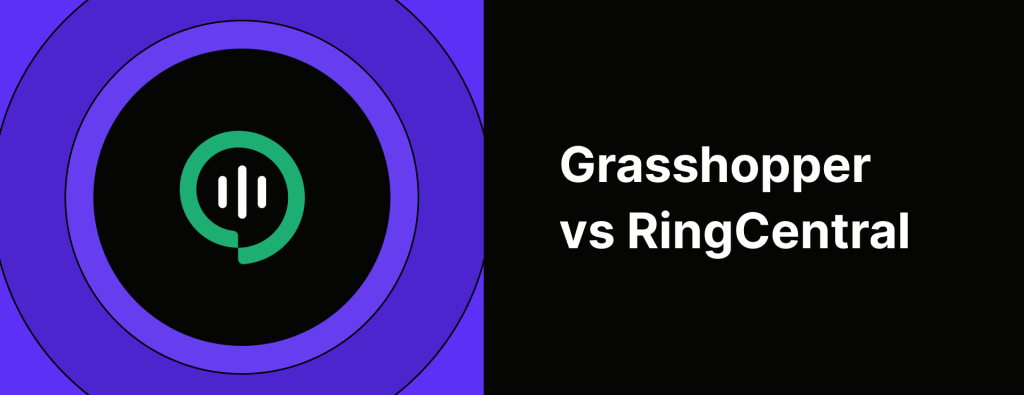Grasshopper vs Google Voice
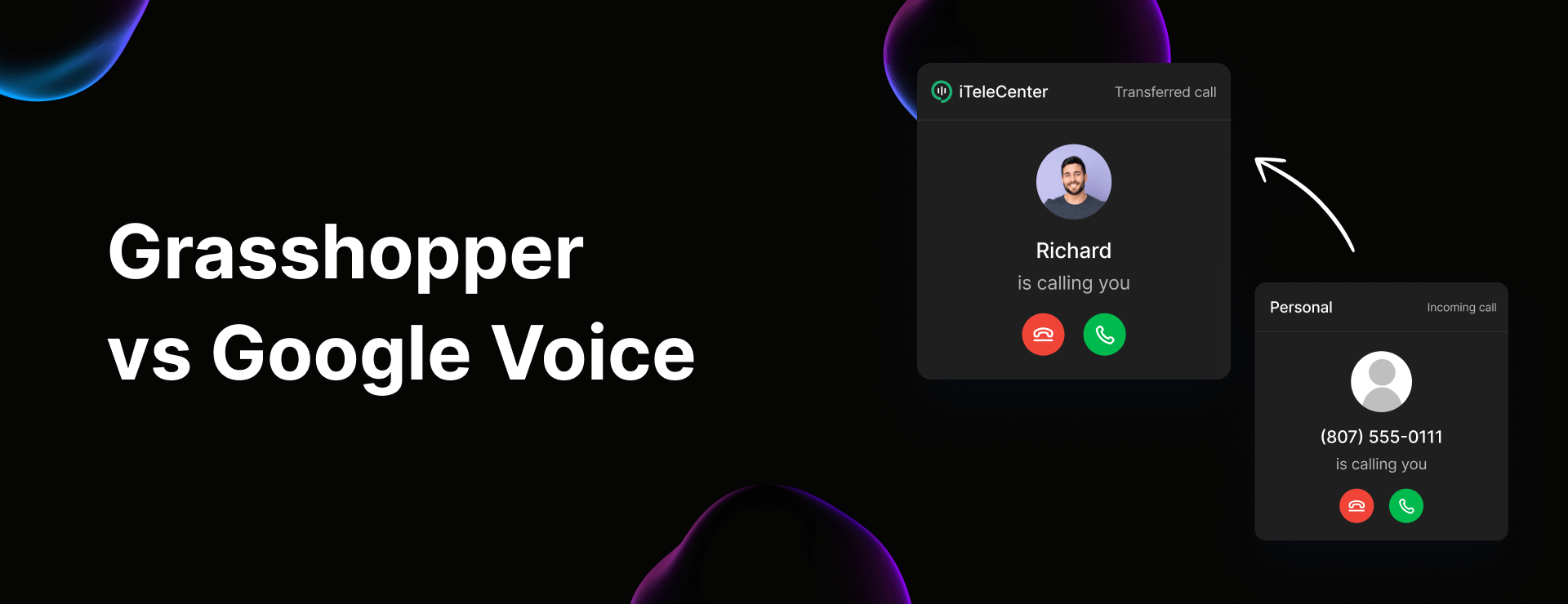
So you’re finally thinking about getting a separate number for your business.
Great!
Both Grasshopper and Google Voice are simple, beginner friendly VoIP options – great for solo entrepreneurs or small teams. They may not have all the necessary features that other platforms like iTeleCenter offer for growing businesses.
There are a ton of phone systems out there, and choosing the right one can feel like you’re trying to order from a menu in a language you barely speak.
If you’re currently stuck choosing between Grasshopper and Google Voice, don’t worry. We’re here to break it all down for you.
How we broke down the Grasshopper vs Google Voice showdown
We didn’t just skim the surface or list out features from a marketing page. We took a ‘REAL’ close look at how Grasshopper and Google Voice actually perform when it comes to running a small business.
The goal? To help you make a confident, no regrets decision.
Here’s everything we dug into:
Pricing and plans
We looked at what each platform charges, how their monthly and annual pricing compares and what you actually get for the price. We didn’t forget to look at those sneaky add-ons and hidden fees, don’t worry.
Business numbers and extensions
We checked what types of numbers you can get – like local, toll-free, vanity and even international. We also looked at how many extensions are included and whether you can bring your existing number with you.
Core calling features
This is the stuff you use every day. We reviewed how each system handles basics like call forwarding, call screening, transfers and virtual faxing.
IVR and auto attendant tools
We explored how easy it is to create phone menus, route calls based on business hours, etc. These features make a small team sound polished, and they can save you time by getting callers where they need to go without extra hand-holding.
Business texting
We looked into texting features like SMS and MMS support, group messaging and any limits you might run into. Some platforms are way more flexible here than others, especially if you like to communicate with customers by text instead of always calling.
Call reporting and analytics
We checked whether each system gives you useful data. Can you see missed calls, track call times or agent performance? We evaluated what’s available and how easy it is to use that data to improve your customer experience.
Customer experience and support
Finally, we tested what it’s like to actually get help. Can you talk to a human when you need one? Are there helpful guides or tutorials?
First up, Grasshopper
Grasshopper has been around for more than two decades and it’s built to help small businesses sound more professional without the need for fancy equipment.
Unlike many modern VoIP systems that rely completely on the internet, Grasshopper mainly works by routing calls through your existing landline or cell phone.
You can pick from a few different number types when you sign up:
- Local numbers
- Toll-free numbers
- Vanity toll-free numbers (like 1-800-JACK)
- Or even port in your existing number
The system is pretty intuitive and works across both desktop and mobile apps. You’ll also get core features like SMS texting, call forwarding, custom greetings, an auto-attendant and flexible call routing – all designed to make your business feel a little more polished.
Every tool has its perks and limitations. Here’s what we found with Grasshopper:
What we like about Grasshopper
- Plenty of number and extension options – Local, toll-free, vanity numbers, and multiple extensions if you need them.
Easy setup – You can get started in minutes without needing any fancy hardware. - Flexible call routing – You can take calls over your cell network or Wi-Fi, depending on what works best.
- No per-user pricing – You’re charged per account, not per person, which can be more cost-effective for small teams.
What could be better
- Missing some key features – No call recording, no integrations and limited texting functionality.
- $25 activation fee – Not a deal-breaker, but worth noting
- Custom greetings aren’t free – Want a pro-sounding auto-attendant? That’ll be $75 extra.
- No call recording – If you need to review calls for quality or training, this could be a major limitation.
- Voicemail alerts can be hit or miss – Some users report delays or missing notifications for voicemails and missed calls
Grasshopper pricing plans
Grasshopper keeps things simple with three plans, all of which come with the same core features.
Solo – $28/month: 1 number, 3 extensions (it’s great for solopreneurs)
Partner – $46/month: 3 numbers, 6 extensions (For teams of 1 – 3)
Small Business – $80/month: 5 numbers, unlimited extensions (a good fit for 4+ team members)
Grasshopper is a good pick for small teams that just want a decent phone system. But, if you’re looking for things like integrations, shared team features or advanced automations, you might find it a little too basic.
Next up, Google Voice
Google Voice first launched back in 2009 as a free way to make calls, send texts, and forward calls using VoIP.
You could just use one number across multiple phones, and calls within the US didn’t cost a thing.
To get started, all you need is a Google account and a US-based mobile or landline number to verify your setup.
Over the years, Google added paid plans aimed at small businesses, including features like voicemail transcription, analytics and call reporting. But even with those upgrades, it still doesn’t fully meet the needs of most growing or global teams.
Let’s take a look at where Google Voice does well and where it comes up short:
What we like about Google Voice
- Works well with G Suite – Seamless integration with Gmail, Google Calendar and more
Beginner-friendly – Easy to set up, especially if you’re already familiar with Google products - HD audio – Solid call quality for a no-frills phone system
- Searchable transcripts – You can easily search through text messages and voicemail transcripts, which is pretty helpful
Where Google Voice falls short
- No toll-free numbers – You’re limited to standard local numbers
- Only one number per account – No shared lines, which makes it tough for teams to collaborate
- Support is non-existent – If something goes wrong, you will have to depend on forums for answers. Google Voice does not provide support over email, call or chat.
- No faxing and minimal analytics – You won’t get much insight into call performance
- Basic call management – No advanced routing or customization for incoming calls
Google Voice pricing plans
If you’re sticking to the basics, Google Voice is free and that includes unlimited calls and texts within the US. But if you’re looking for advanced features or want to use it with a team, you’ll need to upgrade to a Google Voice for Google Workspace plan.
Here’s a breakdown of the paid plans:
Starter – $10/user/month Best for solo users or small teams (up to 10 users)
Standard – $20/user/month Great for growing businesses with US-based teams. Includes auto-attendant, ring groups and unlimited users.
Premier – $30/user/month Built for international businesses. Supports global locations and adds more advanced reporting features
iTeleCenter: A better choice beyond Grasshopper and Google Voice
If you’ve been underwhelmed by the limited features in Grasshopper and Google Voice, it might be time to check out iTeleCenter.
iTeleCenter was built with modern businesses in mind – whether you’re a solopreneur, running a small team, or building out a growing startup. It’s easy to get started, and you’ll get way more features for less money than most traditional VoIP services.
Choose the kind of number that works for you

With iTeleCenter, picking a business number is flexible and straightforward. You’ve got options:
- Local numbers – Perfect for building a local presence and showing up with a familiar area code
- Toll-free numbers – Make it easy (and also free) for customers to call you
- Vanity numbers – Great for brand recall and adding a professional touch
Keep your current number – If you’re switching from another provider, port your number and stay consistent for your customers
Features that just make sense
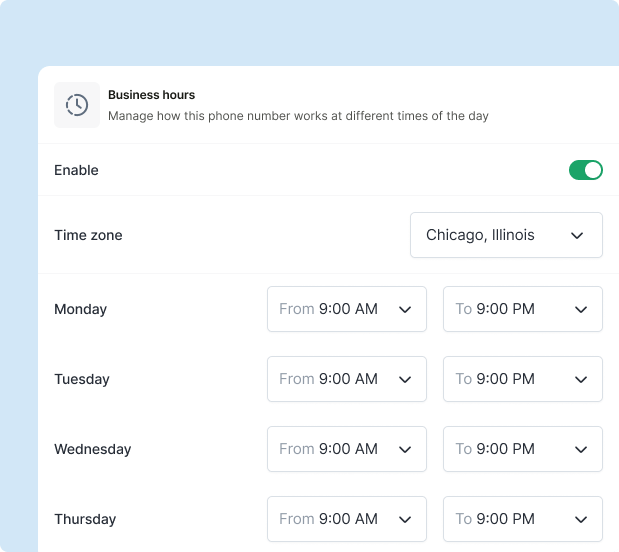
Here are some of the standout features that come standard with iTeleCenter:
- Calls and texts to US and Canadian numbers
- One local or toll-free number per user (more available if needed)
- Call forwarding
- Smart call routing
- Voicemail transcription
- Custom auto-replies
- Set and manage business hours
- Use across multiple devices (phone, laptop and tablet)
- Beautiful, easy-to-navigate interface
iTeleCenter pricing plans
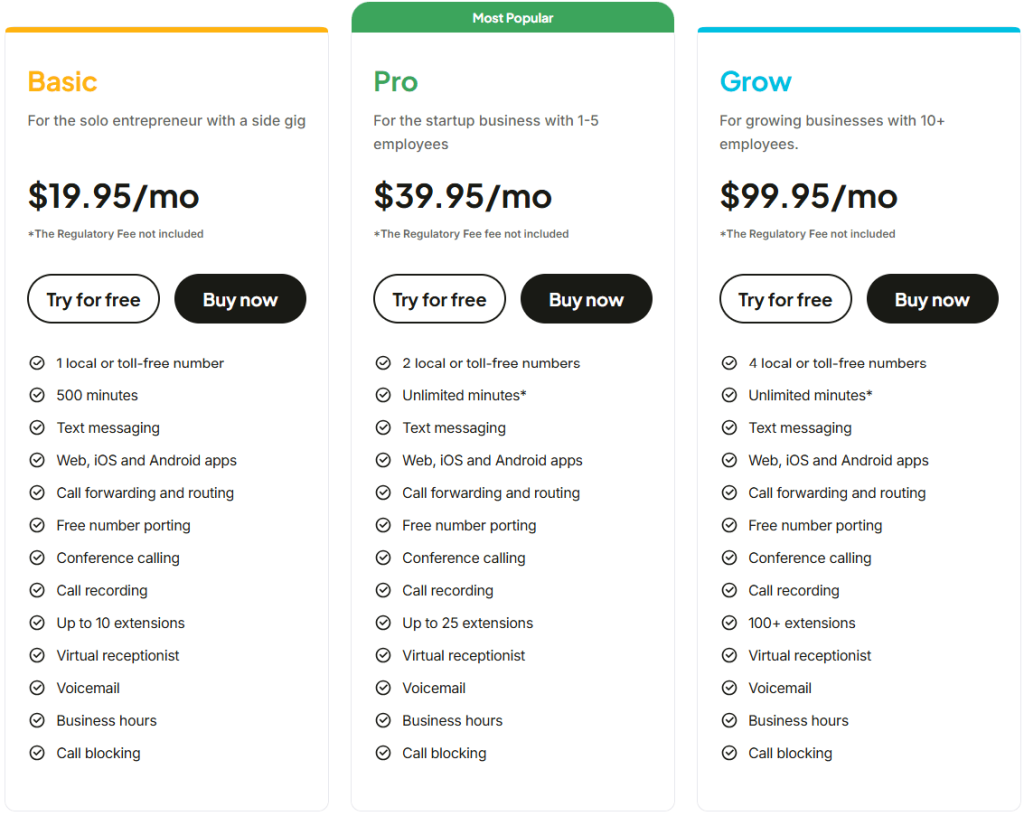
iTeleCenter keeps it simple with three pricing tiers. Every plan comes with powerful tools and you can scale up as your business grows.
Basic – $15.96/user/month
For the solo entrepreneur with a side gig
Pro – $31.96/user/month
For the startup business with 1-5 employees
Grow – $79/user/month
For growing businesses with 10+ employees.
Go beyond Google Voice and Grasshopper
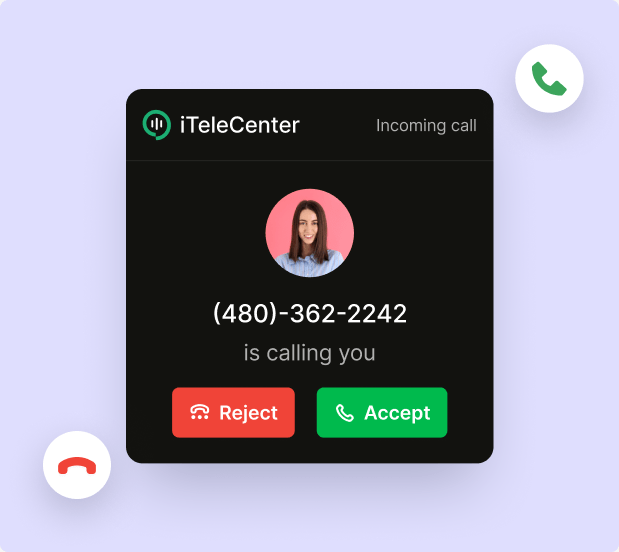
iTeleCenter gives you the features you need, without the clunky setup or hidden costs. You can start a free fourteen-day trial in under a minute – no hassle, no credit card required.
Give it a spin and see just how much smoother your business communication can be. Try iTeleCenter free today.
Table of Contents
Test drive iTeleCenter for free
Try for free

